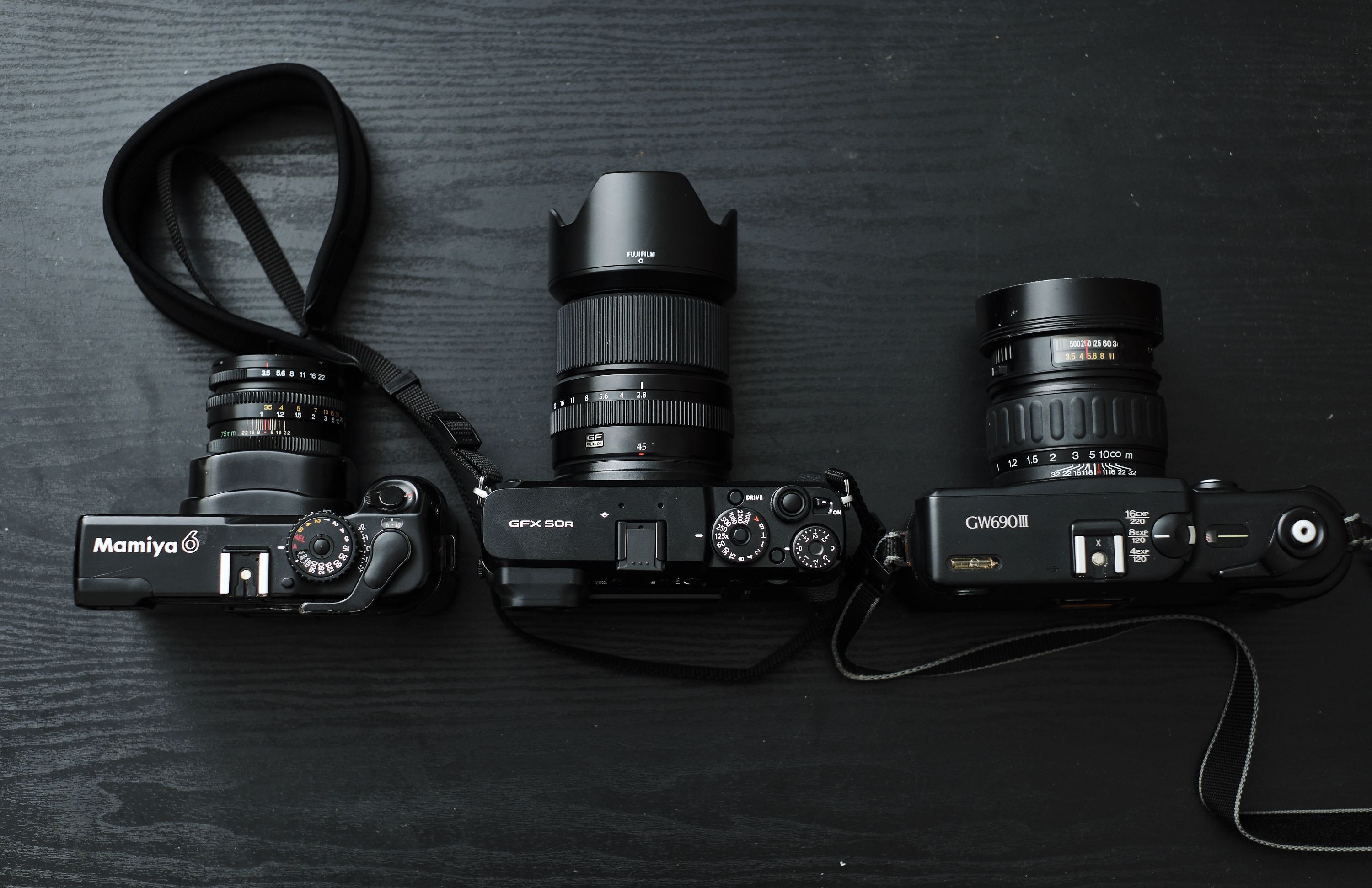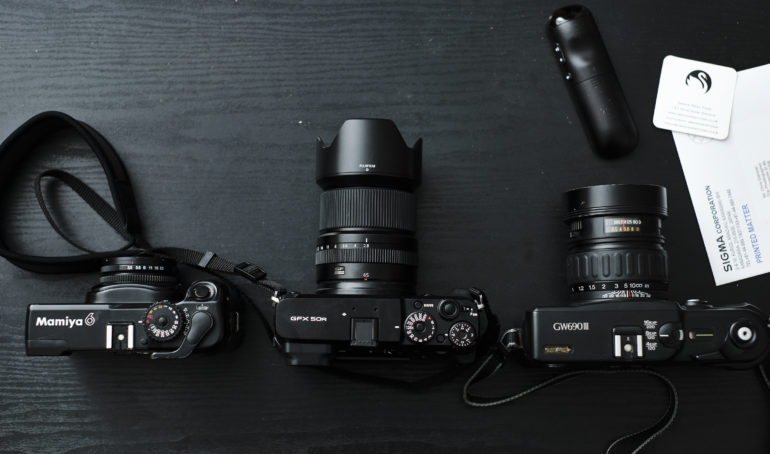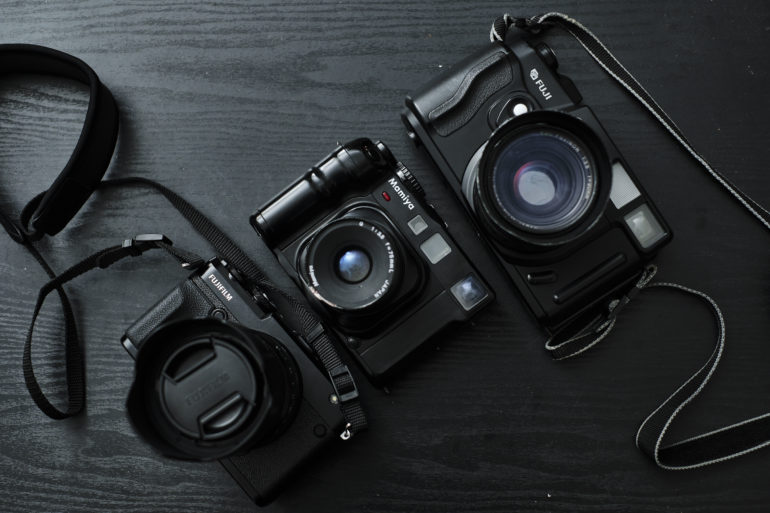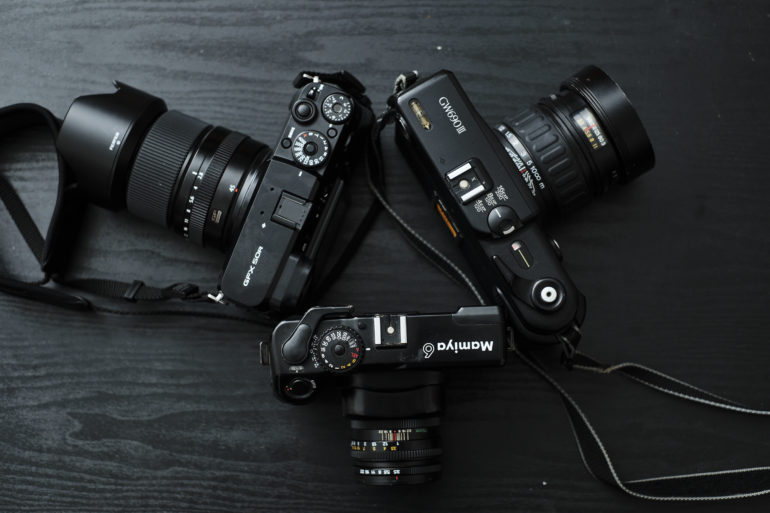Last Updated on 12/13/2018 by Mark Beckenbach
We put the Fujifilm GFX 50R, Mamiya 6, and the Fujifilm GW 690 III all next to each other to show a size comparison.
For those really interested in what the Fujifilm GFX 50R is like, we’ve got a size comparison for you. If you’ve ever held a Mamiya 6, then you know this camera is bigger. If you’ve ever held a GW690 III, then you know this camera is smaller. For what it’s worth though, the lenses on the film cameras are much smaller than the digital lenses on the Fujifilm GFX 50R.
In this photo we’ve got the Mamiya 6 with the lens collapsed in, the GFX, and the GW690 III. (For those of you not aware, the latter is also known as the Texas Leica.) This one has a 90mm f3.8 lens attached to it. If you remember at Photokina, Fujifilm held the GFX up alongside with the GW690 III camera. They traced its lineage to it and this is the latest evolution (but with interchangeable lenses this time around). The sensor/film plane area is significantly smaller than the 6×9 format though. This isn’t even 645 format. 6×9 is one of the largest medium format sizes that you can get conventionally, but 6×7 tends to be the most popular as it is right between 35mm and large format.
The GFX is perhaps the shortest of the bunch, which is nice. But when it comes to width, the Mamiya camera is taking the cake here.
As you can see in this image, the GW690 III is just a bit longer than the GFX. But the Mamiya 6 is still the smallest of the bunch overall. With this said, I’m sure that the GFX is probably the medium format rangefinder style camera most of us have been hoping for.
We’re almost done with our review, so stay tuned.





